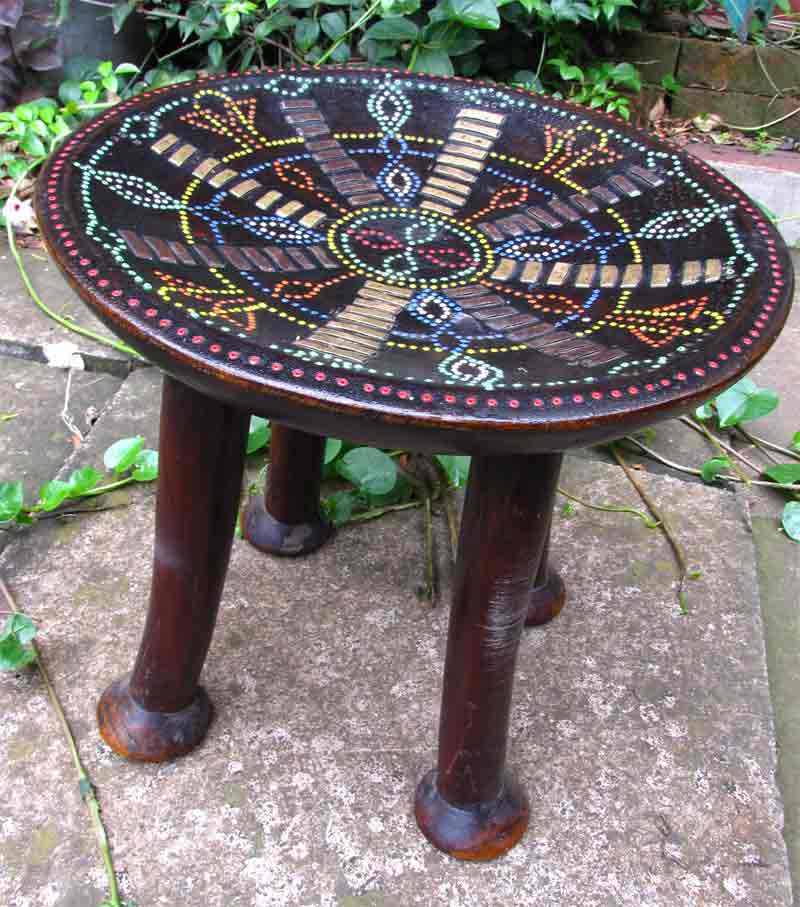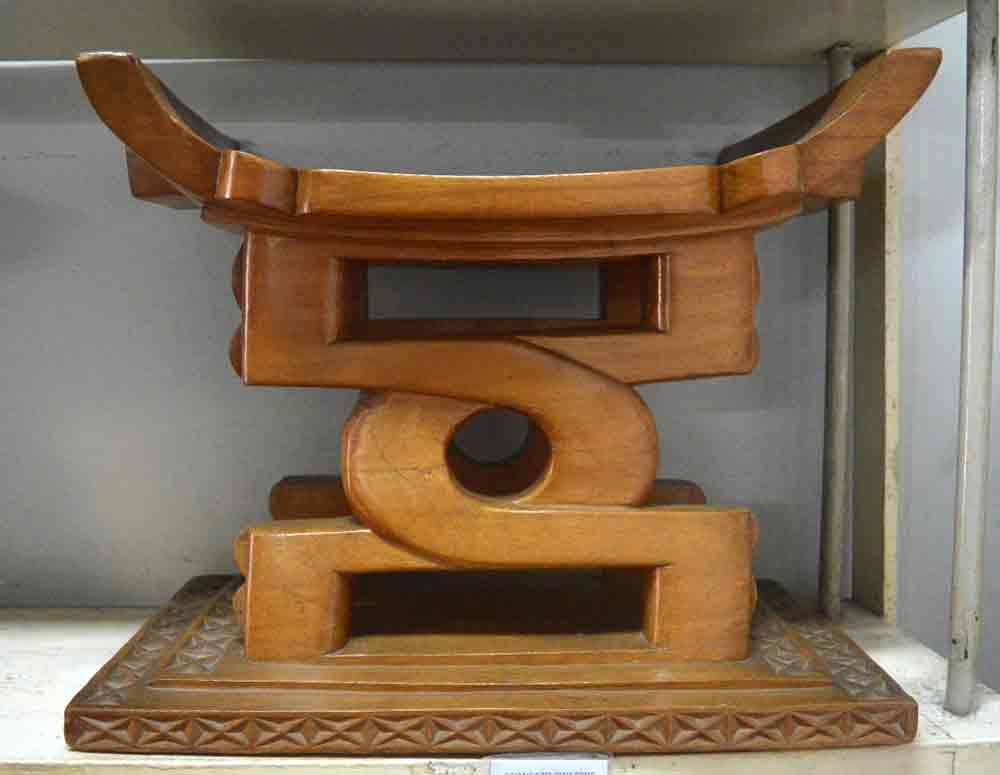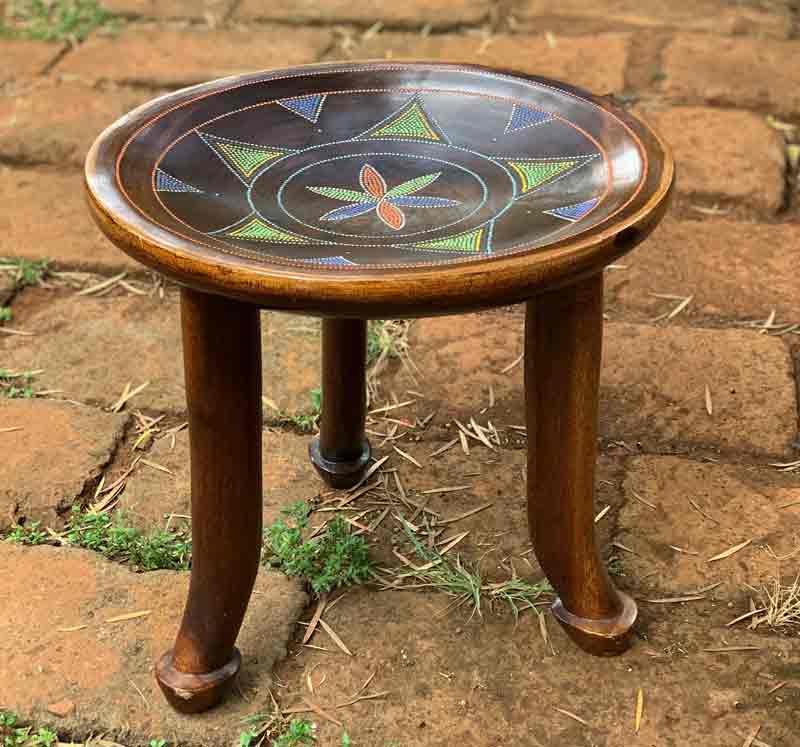Kenya is extraordinarily rich in creativity, materials, and ideas sources of inspiration reflected in their artefacts which has evolved to its current prosperous state over the centuries. The Kenyan culture can be seen in the visual arts, applied arts, food, music, dance, sports, fashion, literature, and theatre. The artefacts are an extraordinary source of inspiration and nourishment for the artist. Their designs embody African design aesthetics that have retained traditional designs as they also reflect elements of innovation, hybridity, sustainability and modernity (Maina et al., 2017). The artefacts reflect religious beliefs and cultural values – two inseparable elements enmeshed in Kenyan craft. The Kenyan traditional art is fundamentally functional, meeting some specific utilitarian purposes, whereas its aesthetic consideration is typically regarded as having some secondary significance. Art was integrated into everyday aspects of life from formal ceremonies and religious rites to daily household tasks. The arfetacts were produced by skilled experienced crafts persons who were found in the societies. Art is an expression of a particular community or culture through the employment of local materials and craftsmanship.
The Jua Kali manufacturing subsector is the predominant creator of craft products in Kenya (Maina et al., 2017). Jua Kali is a self-organising community of practice producing goods. It is comprised of artisans running micro and small enterprises that are not fully integrated into the mainstream formal economy. The artisans learn skills through traditional apprenticeship (TA). Apprenticeship training is regarded as a critical contributor to skills supply, fostering economic development in Kenya. It involves the transmission of the tacit rather than the explicit knowledge and is the most tangible exhibition of the intangible cultural heritage. It facilitates the transmission of skills from a custodian of knowledge, the Master Craftsman. It combines ethnic design and aesthetics and contemporary styling in craft production in Kenya. Involves the transmission of the tacit rather than the explicit knowledge through observation, imitation and reputation. Besides, apprenticeship ensures that the knowledge and skills that relate to the craft are passed down to future generation so that they continue to be produced within their communities. The learning of the Kenyan design, aesthetics is therefore, an intergenerational phenomenon.
Kenya's ethnic groups can be divided into three broad linguistic groups Bantu, Nilotic and Cushite. The Nilotic tribes in Kenya include Luo, Kalenjin, Maasai and Turkana (Hino et al., 2019). The Nilotic speakers migrated from Sudan and Egypt. They are traditionally pastoralists and fishermen and reside in Kenya's vast Rift-Valley region and around Lake Victoria (Madut, 2020). Each of these communities has its traditions, customs, and practices, imbued with multiple layers of culture, colonial legacies, and migration that add to the rich Kenyan cultures (Deisser & Njuguna, 2016) . The distinctness and confluence of these cultures have served as artistic inspiration for many a cultural product creatively fashioned out of raw materials primarily sourced from the natural environment.
The Luo or Lwoo (also called Joluo, singular Jaluo) are an amalgamated agro-fishery and Nilotic Dholuo ethnolinguistic groups in Africa that inhabit an area ranging from South Sudan and Ethiopia, through northern Uganda and eastern Congo (DRC) (Ojwang, 2021; Prince & Geissler, 2008), into western Kenya, and the Mara Region of Tanzania west Kenya, eastern Uganda, and in Mara Region in northern Tanzania. The name Luo or Low means "God's life-bearing exhalation.' The past economic activities of the Luo included fishing and cattle farming (Ndeda, 2019). Agriculture, especially that which involves staple crops such as maize and beans (Ojwang, 2021). Nilotic communities such as Turkana and Pokot (ekicholong) and even Bantus such as Kamba (mumo ya muthamia) and Taita (kifumbi) in Kenya have traditional stools that have been used for various cultural and functional purposes (Somjee, 1993).
This paper discusses the Luo Traditional Three-Legged Stool called “Kom Nyaluo” in the Luo tribe (Hoehler-Fatton, 1996). My interest in this stool arose because I am a Luo lady married to a Luo man who owns the stool.

Kidenda, “Domestic Exhibition of Kom Nyaluo to EVC Expert Panel Discussing the Versions of the Traditional Stool”, Wood and Beads, 2022 Karen, Nairobi
The circular top of Kom Nyaluo symbolises the round universe and a miniature universe on which the husband reins in a home. It is a sign of prestige and leadership, reflecting the status or power of men or the husband within society and a reflection of the round traditional Luo huts. Its legs embody male masculinity and virility (Biko, 2010). Only the father was qualified to sit on the seat as he had requisite authority and was the owner of all the women he brought forth life with. He would sit on it when addressing issues; women and children would sit on the ground.
The traditional Kom Nyaluo was small, with a height of about 30cm from the ground and decorated with beads (Hoehler-Fatton, 1996). Each elder had their stool, and women and children were forbidden from sitting on it. Kom Nyaluo is associated with the authority the elders wielded and the respect that they were accorded in their homes and society. The stool design reflected the traditional activities of men and women. The men worked and socialised outside the home, and the women mostly worked inside and around the house and garden (shamba). A married young man with a few children applies for an eldership position in a ceremony where he hosts community elders. He would be dressed in traditional regalia, carry a spear and fly whisk. The elders would sit him on Kom Nyaluo and crown him as an elder.
Most traditional Luo homes were polygamous, and the stool played a significant role in controlling the wife, which enjoyed marital favours and childbearing. The husband or man of the house would send the stool to the woman's hut. He would want to spend the night in her hut. The stool would be sent secretly, and early the following day, the man would sneak back into his hut so that the other wives would not know whom he slept with. This brilliantly averted obvious petty jealousy will arise from a polygamous home. If one wife felt that she didn't have the stool in her house often enough, she would ask the first wife to intervene on her behalf. "If the first wife didn't like her, she would ensure her complaints did not reach their husband. The seat symbolised love and joy and sustained life in a traditional Luo homestead. Literally and figuratively, of course. Kom Nyaluo did not only represent the authority of the man but also love and joy and sustained life in the traditional Luo home (Biko, 2010).
Kom Nyaluo was used during the levirate ceremony or "tero", where a widow was remarried to a relative of their deceased husband. The levirate union is consummated by sexual intercourse on the first night. If the widow invited the elders for a drink the day after the night of "ter", it was a sign that the night had been successful. During the drinking session, there was the enthronement ceremony of the new head of the home onto the stool of the deceased, "Kom wuon dala" (seat of the homeowner). With the enthronement, it was as if the dead man was alive again (Lutta, 2015). After marrying and having a few children, a Luo man applies for elderhood by hosting the elders at a party where he will be crowned and dressed in traditional regalia. Signs and symbols of authority that include a spear fly whisk and a three-legged stool are given to the elder.
Production Process
In this case study, the Kom Nyaluo is produced by an artisan from Siaya County Jua Kali Association craftsman. He learned his father's craft skills through traditional apprenticeship and made his products on demand. The Luo traditional stools are carved with logs from ober (mvule tree), ngo'wo (fig tree), duwa (oak tree) and the member (mango tree). The logs are chopped by a power saw and dried for one week. These are hardwood types that are strong, durable and water-resistant. They also feature unique colours and grain patterns that create a stunning display. Oak is light yellowish-brown and generally straight-grained; it is also hard and durable. Mvule wood comes from the African teak, known in Nigeria as the iroko tree; it is challenging, dense, and durable. Fig tree wood sometimes contains latex, which can be toxic or an allergen. Since the fig trees seldom grow straight, their boards tend to be shorter. However, the wood is soft and not very strong. Mango wood is relatively easy to work with; it is easier to shape, plane and sand while still strong and durable. It is also friendly to waxing and staining, making it excellent for furniture or other household objects.

Kidenda, “Wood Logs used for curving out Kom Nyaluo”, 2013, Siaya, Kenya
Each log costs the artisan ten thousand Kenya shillings (Ksh. 10,000), equivalent to sixty-seven (67) euros. The stool is carved from a single block of wood, the wood between stem and roots, which has twisted grains that are more durable and cannot break or crack. The stool is made without using joints or nails. The seat takes the shape of a log. The carver uses Koyo (adze) to fashion Kom Nyaluo from the log, which does not require nails or joints.

Kidenda, “Curving out the Kom Nyaluo from a log”, 2013, Siaya, Kenya (photo by Mary Clare Kidenda)
Its top takes the circular shape of the log, and after carving, it is smoothened with a furr (metal scrapper for smoothing wood).

Smoothening the Circular Top Using Furr, 2013, Siaya, Kenya; Furr, the handmade metal tool used to smoothen the top of Kom Nyaluo, 2013, Siaya, Kenya (photos by Mary Clare Kidenda)
They are then sandpapered and vanished using paintbrushes.

Sandpapered and vanished sets of Kom Nyaluo, 2013, Siaya, Kenya (photo by Mary Clare Kidenda)
A compass is used for drawing geometrical patterns on the top of the stool.

The drawing of geometrical patterns using a compass, 2013, Siaya, Kenya (photo by Mary Clare Kidenda)
Supposedly the design is inspired by a parquet floor in a European-style house owned by Tom Mboya. The wire inlay practised by the Kamba may also have been a model. Thereafter, wood, glass beads, metal, and colourful Maasai beads are banged onto the top, providing intricate decorative artwork.

The inserting/banging of beads into the top of Kom Nyaluo, 2013, Siaya, Kenya (photo by Mary Clare Kidenda)
Finished: A Luo Dignitary Stool “Kom Nyaluo”

Variety Designs of Finished Kom Nyaluo, 2019, Karen, Kenya (photo by Mary Clare Kidenda)
When Sara went to the US for the inauguration of Mr Obama as president in January 2009 Mama Sarah carried a similar stool. In 2015 when President Obama visited Kenya, he was given a traditional Luo stool (Langat, 2015).

Kom Nyaluo Created by Luberastus Onyango, Wood, glass beads, metal, 2020 Smithsonian National Museum of African Art.
Luberastus Onyango was a renowned Kom Nyaluo craftsman (he died in 1988) whose stools have been given to at least 2 US presidents as gifts President, including John F. Kennedy and Barrack Obama.

Variety Designs of Finished Kom Nyaluo, 2019, Karen, Kenya (photo by Mary Clare Kidenda)
A generation of Kenyan artists and designers are translating their view of Kenyan design into beautifully crafted products and creating an aesthetic diverse as the tribes and cultures that make up Kenya. This is evident in the JKS in the preservation and modification of the designs like Kom Nyaluo through a traditional apprenticeship that is the critical training methodology of apprenticeship used in Jua Kali Associations. This is evident with the continued production of Kom Nyaluo because of for its cultural utility and aesthetic functionality in the contemporary modern spaces. Artisans and designers are to re-direct and co-create new narratives that re-position philosophical discourse on aesthetics, among other contemporary debates. A generation of Kenyan artists and designers are translating their view of Kenyan design into beautifully crafted products and creating an aesthetic diverse as the tribes and cultures that make up Kenya.
References
- Biko, J. (2010). When in Kisumu, make sure you visit the museum. Eastern African Publication. https://www.theeastafrican.co.ke/tea/magazine/when-in-kisumu-make-sure-you-visit-the-museum--1297986
- Deisser, A.-M., & Njuguna, M. (2016). Conservation of natural and cultural heritage in Kenya: A cross-disciplinary approach. UCL Press.
- Hino, H., Langer, A., Lonsdale, J., & Stewart, F. (2019). From Divided Pasts to Cohesive Futures: Reflections on Africa. Cambridge University Press.
- Hoehler-Fatton, C. (1996). Women of fire and spirit: History, faith, and gender in Roho religion in western Kenya. Oxford University Press.
- Langat, P. (2015). Mama Sarah reveals her special gift to Obama during visit. Nation. https://nairobinews.nation.africa/mama-sarah-reveals-her-special-gift-to-obama-during-kenyan-visit/
- Lutta, C. (2015). The Traditional Levirate Custom as Practiced by Luo Of Kenya. University of Gavle.
- Madut, K. K. (2020). The Luo people in South Sudan: Ethnological heredities of East Africa. Cambridge Scholars Publishing.
- Maina, S. M., Rukwaro, R. W., & Onyango, W. H. (2017). Infusing Design In The Jua Kali (Informal Sector) Production Processes. Journal of Humanities and Social Science, 3(2), 1–12.
- Ndeda, M. A. J. (2019). Population movement, settlement and the construction of society to the east of Lake Victoria in precolonial times: The western Kenyan case. The East African Review [Online], 52.
- Ojwang, H. H. (2021). A study of Luo Ethnobotanical Terminology with implications for Lexicographic Practice. Lifelong Education Material Publishers.
- Prince, R., & Geissler, W. (2008). Becoming “One Who Treats”: A Case Study of a Luo Healer and Her Grandson in Western Kenya. Anthropology & Education Quarterly, 32(4), 447–4.
- Somjee, S. (1993). Material culture of Kenya. East African Educational Publishers.














